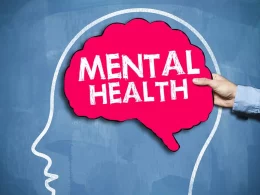In recent years, there has been a significant surge in Mental Health Awareness campaigns worldwide. This growth is not only a reflection of increasing recognition of mental health issues but also a testament to the concerted efforts by various stakeholders to address these challenges. From grassroots organizations to global institutions, the collective push towards Mental Health Awareness is reshaping societal attitudes, policies, and support systems.
Historical Context
Mental health has long been a stigmatized topic, often relegated to the shadows of public discourse. Historically, individuals suffering from mental health issues were marginalized, misunderstood, and sometimes even institutionalized in inhumane conditions. The lack of understanding and the prevalence of myths surrounding mental health contributed to the stigmatization and isolation of affected individuals.
The paradigm began to shift in the mid-20th century with the advent of more humane treatments and the deinstitutionalization movement. However, it wasn’t until the late 20th and early 21st centuries that Mental Health Awareness campaigns began to gain significant traction. The advent of the internet and social media played a crucial role in amplifying these efforts, providing platforms for advocacy, education, and support.
The Role of Advocacy and Non-Profit Organizations
Advocacy and non-profit organizations have been at the forefront of the Mental Health Awareness movement. Organizations such as the National Alliance on Mental Illness (NAMI), Mental Health America (MHA), and the World Health Organization (WHO) have been instrumental in promoting awareness, providing resources, and advocating for policy changes.
These organizations utilize various strategies to raise awareness, including public service announcements, educational programs, and community events. Campaigns like Mental Health Awareness Month, observed every May, and World Mental Health Day, celebrated on October 10th, have become pivotal in highlighting mental health issues and mobilizing resources.

The Impact of Social Media
The rise of social media has revolutionized the way Mental Health Awareness campaigns are conducted. Platforms like Facebook, Twitter, Instagram, and TikTok have become powerful tools for disseminating information, sharing personal stories, and creating supportive communities. Hashtags such as #MentalHealthAwareness, #EndTheStigma, and #ItsOkayToNotBeOkay have garnered millions of posts, fostering a global conversation around mental health.
Social media influencers and celebrities have also played a significant role in normalizing discussions about mental health. By sharing their personal struggles and advocating for mental health, they have helped to reduce stigma and encourage others to seek help. Campaigns like Bell Let’s Talk, spearheaded by Canadian telecommunications company Bell Canada, leverage social media to raise funds and awareness for mental health initiatives.
Corporate Involvement
The corporate sector has increasingly recognized the importance of Mental Health Awareness. Many companies have implemented mental health programs and initiatives to support their employees’ well-being. This shift is driven by the understanding that mental health significantly impacts productivity, job satisfaction, and overall workplace culture.
Corporate campaigns often include mental health training for managers, Employee Assistance Programs (EAPs), and partnerships with mental health organizations. By fostering a supportive work environment and promoting Mental Health Awareness, companies can contribute to the overall well-being of their employees and the broader community.
Government and Policy Initiatives
Government involvement is crucial in the fight for Mental Health Awareness. Policymakers at local, national, and international levels have begun to prioritize mental health in their agendas. This includes increasing funding for mental health services, implementing mental health education in schools, and enacting laws to protect the rights of individuals with mental health conditions.
For instance, the Mental Health Parity and Addiction Equity Act (MHPAEA) in the United States mandates that insurance coverage for mental health conditions be on par with physical health conditions. Similarly, the United Kingdom’s Mental Health Act provides a legal framework for the treatment and protection of individuals with mental health issues.

The Role of Research and Education
Research and education are foundational to the growth of Mental Health Awareness campaigns. Academic institutions and research organizations conduct vital studies that inform our understanding of mental health conditions, their causes, and effective treatments. This research is crucial for developing evidence-based interventions and informing public policy.
Educational initiatives aimed at increasing Mental Health Awareness are also essential. Schools, universities, and community organizations play a pivotal role in educating individuals about mental health, reducing stigma, and promoting early intervention. Programs that teach coping skills, stress management, and emotional intelligence can have a lasting impact on individuals’ mental health and well-being.
Challenges and Future Directions
Despite the progress made, several challenges remain in the quest for comprehensive Mental Health Awareness. Stigma continues to be a significant barrier, preventing many individuals from seeking help. Additionally, access to mental health services remains uneven, with disparities based on geography, socioeconomic status, and cultural background.
To address these challenges, future Mental Health Awareness campaigns must focus on inclusivity and accessibility. This includes reaching underserved populations, integrating mental health into primary care, and utilizing technology to provide remote and affordable mental health services.
Moreover, there is a need for sustained advocacy and funding to support mental health initiatives. Governments, corporations, and non-profit organizations must continue to collaborate and innovate to address the evolving mental health landscape.
Conclusion
The growth of Mental Health Awareness campaigns marks a significant shift in how society views and addresses mental health. Through the efforts of advocacy organizations, the power of social media, corporate involvement, government initiatives, and the contributions of research and education, Mental Health Awareness has gained unprecedented momentum.
As we move forward, it is essential to build on this progress and continue to advocate for a world where mental health is understood, respected, and prioritized. By fostering a culture of openness, support, and compassion, we can create an environment where individuals feel empowered to seek help and thrive. The journey towards comprehensive Mental Health Awareness is ongoing, but with continued effort and collaboration, a mentally healthy society is within reach.












